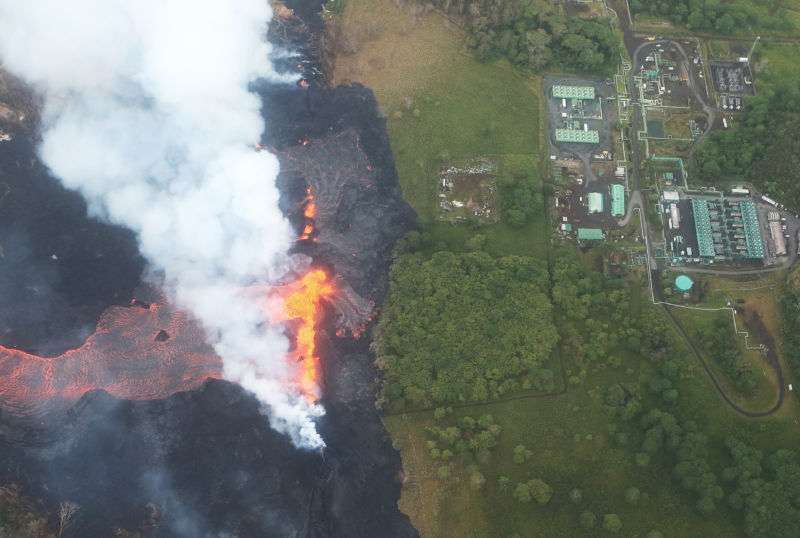
A year after Hawaii’s Kīlauea eruptions, a nearby geothermal plant eyes restart

Last May, Hawaii’s Kīlauea volcano erupted suddenly, starting a weeks-long lava creep that destroyed dozens of homes and required thousands of residents to be evacuated. Among the structural casualties, the lava also threatened an important source of electricity on the Island of Hawaii: the Puna Geothermal Complex.
Now, the company behind Puna is projecting that the complex may be restarted by the end of this year, following a potential renegotiation of its contract with Hawaii Electric Light Company.
Geothermal plants like Puna create electricity by using the natural heat of underground rocks to heat a working fluid that produces steam to drive a turbine. Puna provided 25 percent of the electricity that served Hawaii (just the Big Island, not the whole Aloha State). So it was an important low-carbon energy source on an island that has historically imported oil to meet its primary energy needs. Although the Big Island has been aggressively incorporating solar power and energy storage onto its grid, petroleum still plays a prominent role in serving the island, which not only creates carbon emissions but also drives the price of electricity up for residents because the oil must be imported.
Back in May 2018, Ormat Technologies, the majority owner and operator of the Puna Geothermal plant, decided to shut down the plant to prevent any electrical fires as the lava crept closer day after day. Ormat also “quenched” some of the hot geothermal wells it operated at Puna amid speculation that damage to the wells could result in releases of hydrogen sulfide gas, which is toxic to humans.
Ultimately, however, the fallout was not so dramatic: a natural berm held back the lava for days, and the flowing hot rock only destroyed a substation on Puna’s 815-acre property, as well as a warehouse containing a spare drill. Lava covered two wellheads, but the rest were left untouched.
The rebuild
According to a March letter (PDF) from the Hawaii Public Utilities Commission, Hawaii Electric Light and Puna have entered into a rebuild agreement to replace the damaged substation and two major transmission lines. Due to lava damage, the transmission lines will have to deviate a bit from where the previous transmission lines stood.
Prior to the Kīlauea eruption, Hawaii Electric Light and Puna were in the middle of negotiations to revisit the geothermal plant’s power purchase agreement. According to West Hawaii Today, that power purchase agreement stipulated that Puna’s owners would be paid for their first 25 megawatts (MW) during peak-demand electricity according to the price of oil. Now, the geothermal plant, which is capable of delivering 38MW at a time, wants to delink the price it receives for power from the price of oil.
Mike Kaleikini, a senior director of Hawaii affairs for Ormat, told West Hawaii Today that “PGV is interested in delinking the cost of power from oil to provide more certainty about its revenue.” Kaleikini also told the paper that the company is still assessing its wells at Puna. The company may have to permanently close some and drill new wells if old ones have been damaged in unexpected ways.
But according to Ormat’s 2018 year-end financial statement, the eruption may have even improved the long-term outlook for some of the geothermal wells at Puna. “Initial tests from the geothermal injection wells indicate higher temperatures at the reservoir with no sign of any negative impact on pressure,” Isaac Angel, Ormat’s CEO, said in February.




